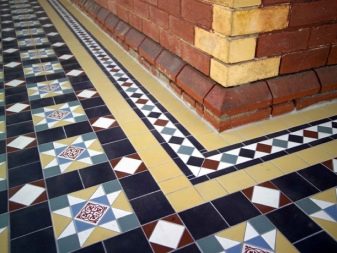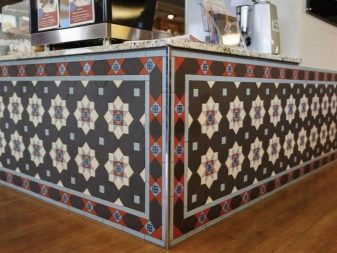Mettlach tiles
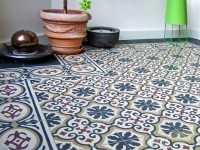
Every month on the world market of building materials appear more and more new varieties of ceramic facing material. However, often people do not trust the new samples of design art and buy brands that are either on everyone's lips, or have already managed to prove themselves. Mettlach tile is one of the few giants of the construction industry, which to this day is a truly sought-after product by Russian and foreign buyers.
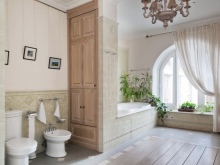
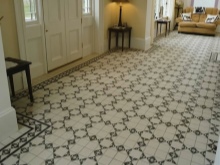
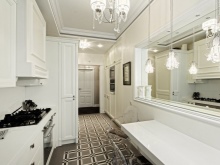
Features
The history of Mettlach ceramic tiles originates in Germany, in the town of Mettlach. In 1894, the production of this high-quality ceramic products began. Today, there are factories in France ("Winkelmans") and in Russia ("EuroCeramics") - the largest production of this building products in the world, which keeps the unsurpassed quality of goods. Also small factories are scattered throughout Europe, but the main ones are these factories.
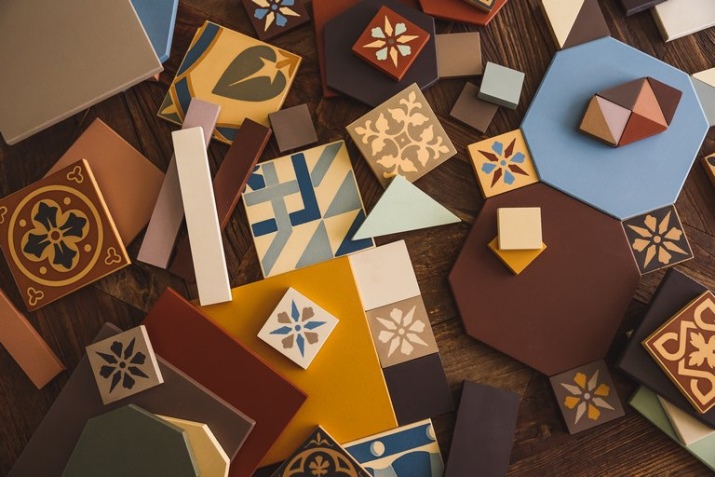
These tiles are small-format ceramics made in a variety of interesting configurations. Thanks to the porcelain component and firing at high temperature, the resulting products have the best qualities, which are similar to those of porcelain stoneware. It is used in almost all areas of cladding: at home, in rooms with a large number of people, outdoors.
Mettlach tile is unique, because with the different shaping of this ceramic creates a design highlight: a complex graphic pattern for floors and walls. Loyal pricing for this product makes this tile available to almost any average buyer.
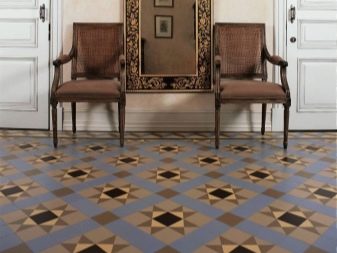
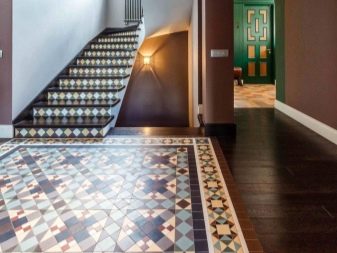
Specifications
All technical indicators of this wonderful material for cladding are much higher than the norm:
- Water absorption according to GOST 473.3-81 is 2.5% (the norm for the highest grade of 3.5%, not more).
- Acid resistance GOST 473.1-81 - 97,71% (the norm for the highest grade of 97%, not less).
- Strength (compression) GOST 473.6-81 - 90.8MPa for 200h200h20, 92.8MPa for 200h200h30, 75.2MPa for 300h300h20 (the norm for the highest grade of 50MPa, not less).
- Strength (bending) GOST 473.8-81 - 42MPa (standard for the highest grade of 25MPa, not less).
- Water permeability according to GOST 13993-78 - 24 hours after the test there are no drops on the tiles.
- Frost resistance in accordance with GOST 473.5-81 - 300 cycles (the norm - 20 cycles, not less).
- Heat resistance in accordance with GOST 7025-91 - 2 shifts (the norm - 3 shifts).
- Wear resistance in accordance with GOST 961-89 p.3.13 - 0,11 g/cm2.
- Radiological control - full list of applications.
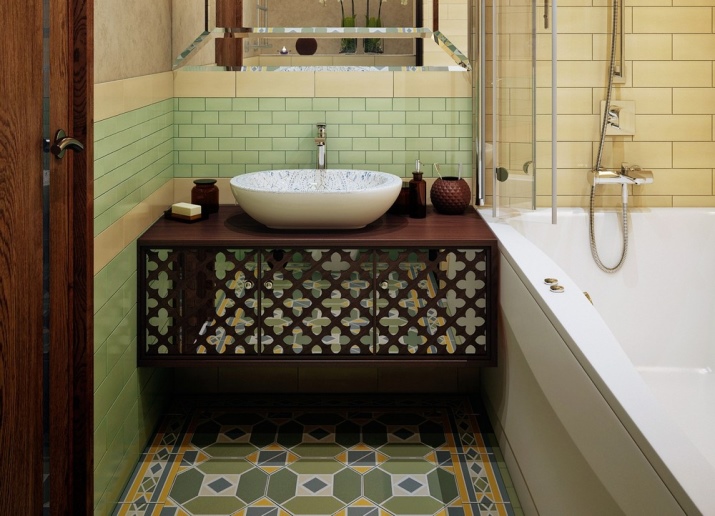
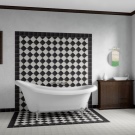
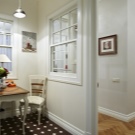

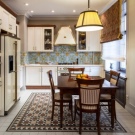
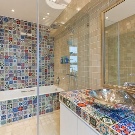
To summarize the qualities of this product, we can characterize the Mettlach tile as follows:
- Unsurpassed hardness of the ceramic - an excellent indicator for those looking for a tile that can withstand the harshest conditions of use.
- Extensive applicability - this product, thanks to its resistance to temperature fluctuations, is applicable in all weather conditions.
- Longevity - due to the deep penetration of paint into the tile structure and the subsequent firing, ceramics receives excellent properties, which allows the tiles over time not to fade and not to lose their original appearance.
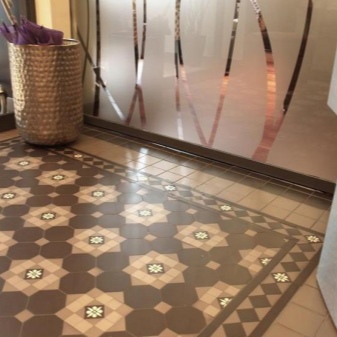
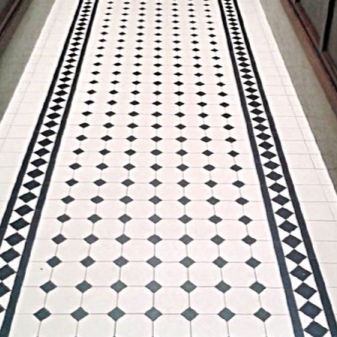
Types of tiles
As any ceramic facing material, this product is subdivided into wall and floor tiles. Basically, the Mettlach ceramic is used to decorate the floor covering.
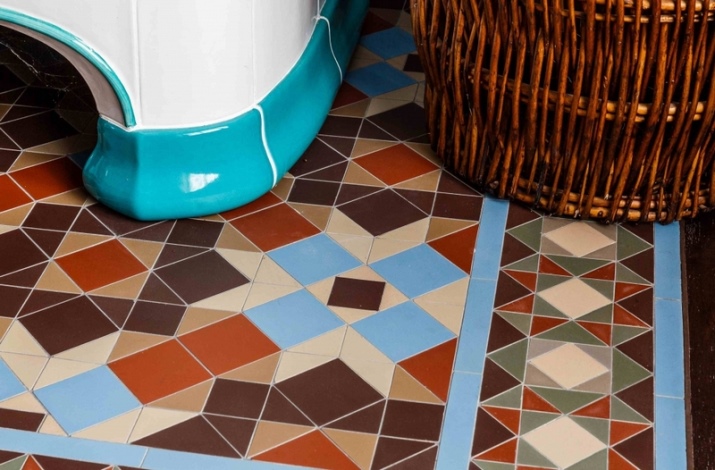
The division into species is based on the principle of production.
A total of three varieties:
- Ceramics, obtained by casting. This tile has a large number of defects due to poor quality of the product. First, the clay mass is poured into molds, then they are dried and sent to the kiln firing at 1200 degrees Celsius. The defect is that such tiles have a different thickness.
- Tiles formed by pressing. This category of ceramics is obtained by pressing a mixture made of clay powder, water and additives required by the manufacturing process. After pressing, geometric shapes of the required dimensions are cut out of the obtained elements. This type of cladding material has a non-porous structure. Due to this, its use is reduced mainly to the decoration of the floor.
- Products made with the help of an extruder. The raw material, passing through the mouthpiece, forms a strip, which is subsequently cut and fired. The mouthpiece is pre-adjusted to set the desired thickness of the product.
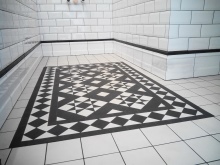
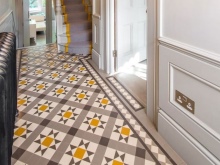
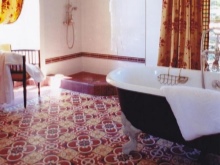
Mettlach tiles are also divided into classes based on strength characteristics:
- First class. Characterized by its low strength. Therefore, this category of finishing material is used only in places remote from the entrance from the street. On such a tile can not walk in street shoes.
- The second class. Applied in those areas where the traffic is not too high. For example, such tiles can be put in the wards with patients, toilets and other similar rooms.
- The third category or class is different application for places with higher traffic. It can be used in corridors, kitchens or hallways.
- The fourth type ceramics found its application in places with large crowds: supermarkets, concert halls and many other such places. The price of such products is significantly higher than other classes of this material.
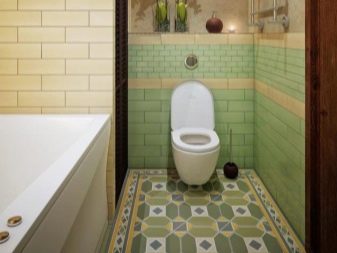
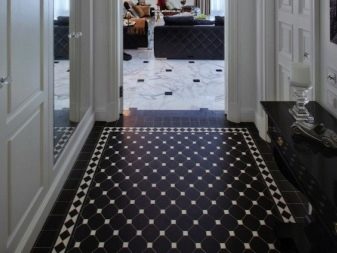
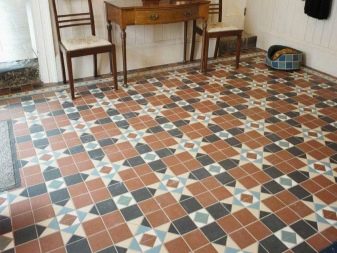
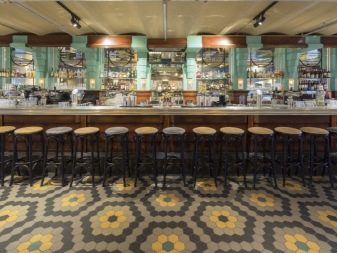
Dimensions
Dimensions of this finishing material is very diverse, as well as its shape: the size range of the building material varies from 6.5 to 15 cm, the thickness - 6-8 mm. The geometric structure of the products is made in the form of a variety of shapes: rectangle, square, triangle, hexagon, octagon and is even on sale cross shape, often used as a wall decoration.
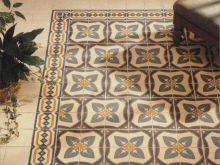
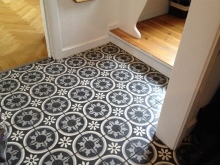
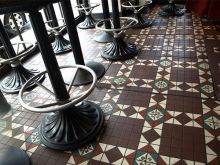
The surface structure of the finished products can be with or without a pattern, in the form of patterns, reliefs, gritty workmanship or simply smooth.
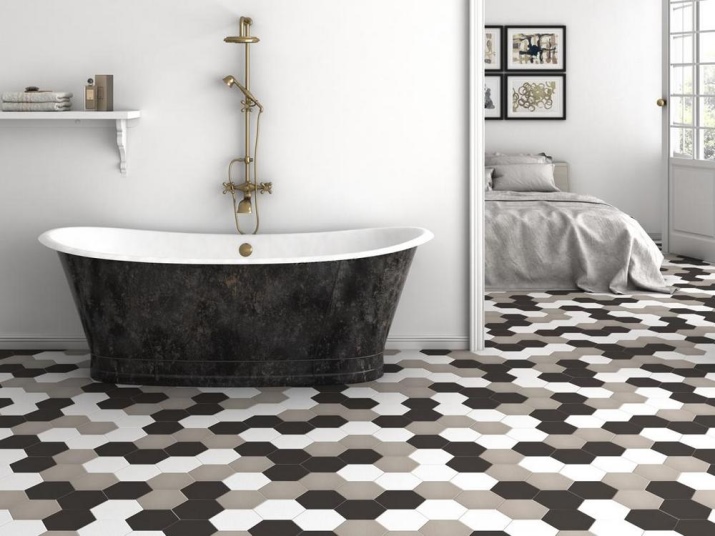
The nuances of laying
The laying of this tile is no different from the laying of any other tile. However, there are nuances of tiling.
Before starting the installation process, it is necessary to prepare the floor surface.
To do this, it is necessary to perform the following actions:
- Level the floor surface. Any height difference promises problems in the installation work. To increase the service life of the tiled base, you can first install waterproofing and concrete screed. For outdoor ceramic flooring, a frost-resistant base is installed.
- Measure the surface of the facing. But it should be done in such a way that all possible zigzags and protrusions were taken into account - this also applies to doorways.
- Next, we find the center of the surface, from which we draw centerlines in different directions.
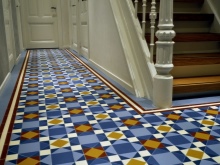
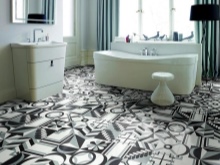
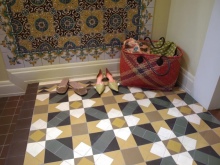
A necessary step for a perfect tiling effect, some experts consider soaking this category of ceramics. Such a procedure should be carried out within 2 hours.

The actual laying process takes place in several stages:
- It is necessary to pre-lay the tiles in one vertical and horizontal row without adhesive, while leaving a gap between the tiles of 1-2 mm. Thus, in the process of pre-laying there is the possibility of adjusting the position of each element. Such a clear approach will help to lay difficult ornaments correctly and without flaws and "fit" the ceramic products to the desired result.
- Then you need to dilute the adhesive composition, which should be fully suitable for the ceramics, and prepare to work trowel with teeth of 3-6 mm.
- First, the largest elements of the ceramic coating are placed on the glue, then the smaller ones. However, please note that some of the products in one collection may differ from the rest in size and thickness. This difference is usually 1-2 mm. But this variation can easily be eliminated by applying glue: where the tiles are thinner, it is necessary to use a thicker layer of glue.
- After the adhesive has set, grout the resulting joints. The choice of color of grout is an important point. Its color should not be conspicuous, and it is necessary to choose it a few tones less than the basic color shade. A neutral solid color is the best option. Usually the choice of buyers stops at white, gray or beige grout. Rubbing should be made to the full depth of the seam gap. Often cement mortar is also used for such purposes.
- In the process of laying, it is important to maintain the same level of new floor décor. If the work is performed outdoors, it is recommended to lay with a slight slope, so that when precipitation water does not accumulate on the surface of ceramics, and flowed, for example, in a specially designated gutter.
- After the laying of the horizontal pavement is complete, you can begin installing the curbs. The process of this measure usually starts from the corner to the central part. It is desirable to protect yourself from unnecessary unnecessary work, such as trimming the remaining material, and buy edging of several sizes, among which should be not only long curbs, but also short. After all, you will need a special tool for trimming: a machine with a disc for porcelain tiles.
- To check how well the work is done, water is poured on the surface of the laid tiles. Uniform drying without puddles is an excellent quality of the work performed.
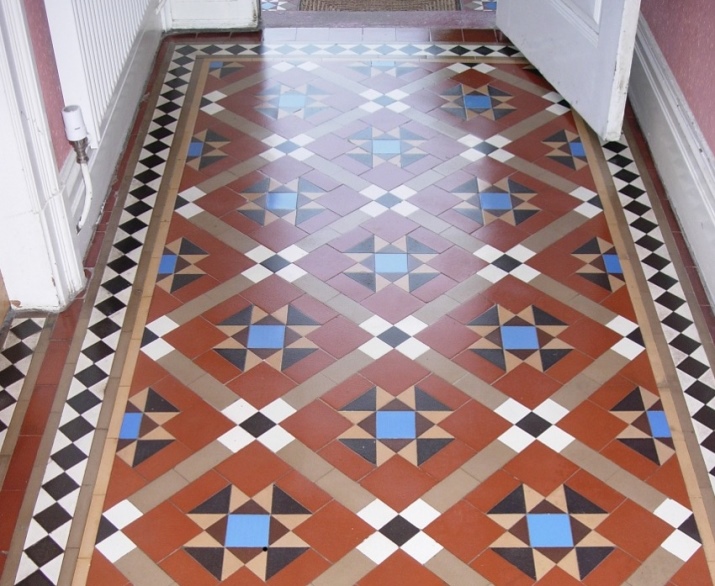
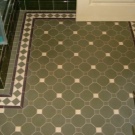
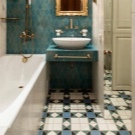
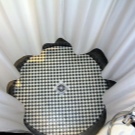
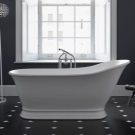
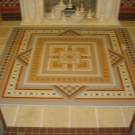
Examples of tiles in the bathroom interior
The bathroom is finished in a classic style and highlights the unmatched nobility and sophistication of the Mettlachian tiles.
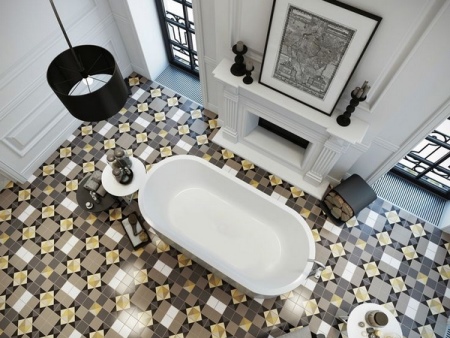
A variety of patterns of metallach ceramics are used not only in the floor version, they can often be found as wall décor.
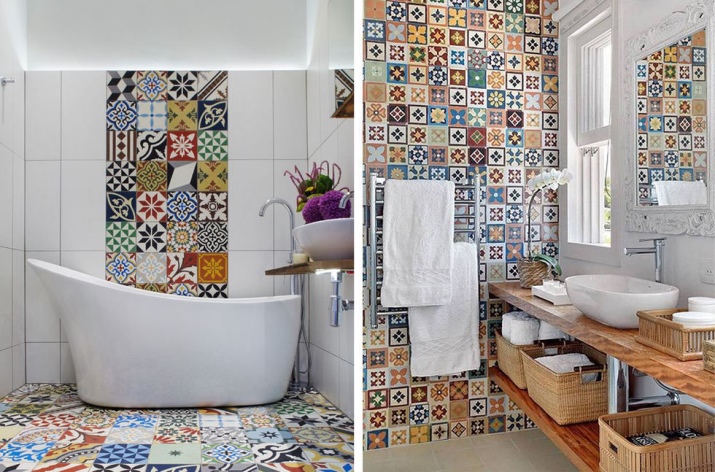
Combining several varieties of ceramic tiles can help you not only decorate the interior of the bathroom, but also make the room more elegant and interesting.
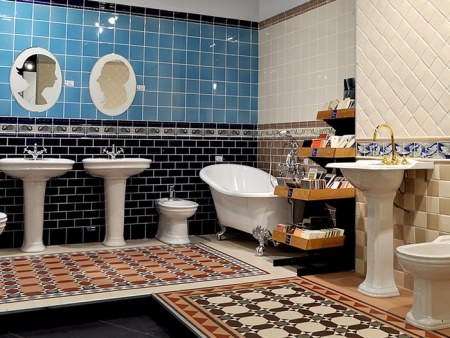
Care
Proper care of mettlacha tiles - the key to cleanliness and comfort. This requires periodic cleaning of the tiled floor with traditional detergents or scouring powders.
To ensure that the coating colors do not fade is also recommended to wash the floor with warm water with a vinegar component. Vinegar should be added to warm water in the following proportions: 1 cup of vinegar per bucket of water.
For the flooring can also be done by rubbing the surface with a cork wax. To do this, you need to heat the wax in water and dip the cork in it.

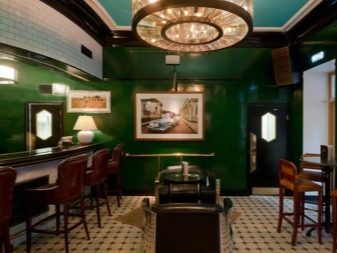
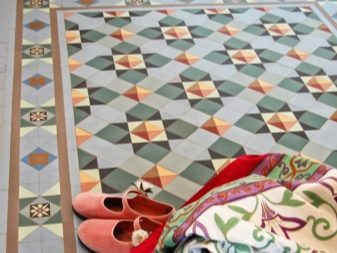
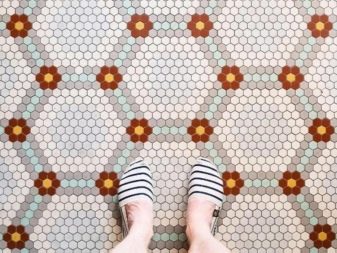
Reviews
Most of the published reviews about this product are positive.
The following positive points stand out:
- Nice classic design;
- Excellent quality;
- Unpretentiousness in care.
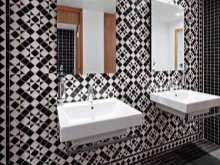
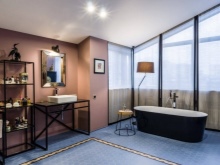
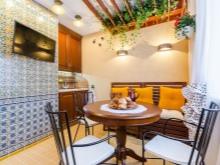
But there are also a number of negative reviews that have not gone unnoticed:
- It gets dirty quickly;
- High price point.
Summarizing all of the above, we can safely give an assessment of "4" to this type of ceramic tile.
